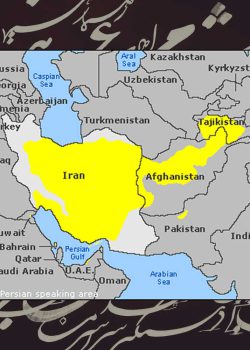How can I learn Persian grammar? Is Persian grammar easy?
Being able to learn grammar properly can make or break your progress in your language learning journey.
Whether it is the grammar of the English language or other native languages around the globe, finding ways to learn grammar easily is a must!
Learning grammar can vary in difficulty depending on the individual and the specific language being learned. Some people find grammar relatively easy to grasp, while others may struggle with certain aspects and Persian grammar can be considered relatively straightforward compared to some other languages. It has a logical structure and is relatively regular in its rules. However, like any language, it still requires effort and practice to master.

Here are some aspects of Persian grammar that can help you understand its complexity:
Alphabet and Writing System: Persian uses a modified version of the Arabic script. It is written from right to left and has 32 letters, some of which have different forms based on their position within a word.

Verb Conjugation: Persian verbs are conjugated based on tense, aspect, mood, and person. The verb stems are relatively stable, and the conjugation patterns are consistent. However, there are irregular verbs that need to be memorized.

Noun Declension: Persian nouns are inflected for case, but the declension system is simpler compared to some other languages. Nouns can have different endings to indicate the direct object, indirect object, or possessive relationships.

Word Order: Persian has a subject-object-verb (SOV) word order, which means that the verb generally comes at the end of the sentence. However, word order can be relatively flexible due to the extensive use of postpositions.

Gender and Plurality: Persian does not have grammatical gender, but it does have plural forms for nouns and adjectives. The plural marker “-hā” is added to the end of the noun to indicate plurality.

Pronouns: Persian pronouns have separate forms for subject, object, and possessive cases. There are also formal and informal forms of address.

To learn grammar in Persian which is called (Farsi), here are some steps you can follow:
Start with the basics: Begin by familiarizing yourself with the Persian alphabet and writing system. Learn how to read and write the letters, as this will be essential for understanding and practicing Persian grammar.
- We write پدر ⟨pdr⟩ and read it as “pedar” (father). The short vowels “e” and “a” are absent in writing. When needed, they can be denoted with diacritics: پِدَر (see vowel marking)
- We write دوست ⟨dvst⟩ and read it as “dûst” (friend). Here, the consonant “v” represents the long vowel “û”.
Study the sentence structure: Persian follows a subject-object-verb (SOV) word order. Understand how the different elements of a sentence are arranged and how they interact with each other. Pay attention to the position of subjects, objects, verbs, and other parts of speech.
Learn verb conjugation: Verbs in Persian are conjugated based on tense, aspect, mood, and person. Begin by studying the present tense and gradually expand your knowledge to other tenses and moods. Practice conjugating verbs in different forms and contexts.
Here are some key aspects of verb conjugation in Persian:
- Present Tense: The present tense is the base form of the verb. To conjugate a verb in the present tense, you generally remove the infinitive ending (-an) and add the appropriate personal endings. The personal endings differ based on whether the verb ends in a vowel or a consonant.
Example:
“خوردَن” (to eat)
I eat: “میخورَم” (mikhoram)
You eat: “میخوری” (mikhori)
He/She/It eats: “میخورَد” (mikhored)
We eat: “میخوریم” (mikhorim)
You eat: “میخورید” (mikhorid)
They eat: “میخورَند” (mikhorand)
- Past Tense: The past tense in Persian typically involves adding specific prefixes and suffixes to the verb stem. There are two main patterns for past tense conjugation, known as the “regular” and “preterite” patterns. Some verbs are irregular and have unique past tense forms.
Example:
“خوردَن” (to eat)
I ate: “خوردَم” (khordam)
You ate: “خوردی” (khordi)
He/She/It ate: “خورد” (khord)
We ate: “خوردیم” (khordim)
You ate: “خوردید” (khordid)
They ate: “خوردَند” (khordand)
Understand noun declension: Persian nouns are inflected for case, but the declension system is relatively straightforward. Learn how nouns change their forms based on their function in a sentence. Pay attention to the use of postpositions to indicate case relationships.
- Plurality: In Persian, nouns are made plural by adding the suffix “-hā” (ـها) to the end of the noun. The suffix “-hā” indicates that there is more than one of the noun. For example:
- “کِتاب” (kitāb, book) becomes “کِتابها” (kitābhā, books).
- “مَدَر” (madar, mother) becomes “مَدَرها” (madarhā, mothers).
- Definite Article: Persian does not have a definite article (equivalent to “the” in English). Instead, Persian often uses context or demonstrative pronouns to indicate definiteness. For example:
- “کِتاب” (kitāb, book) can mean either “a book” or “the book,” depending on the context.
- Indefinite Article: Persian does not have an indefinite article (equivalent to “a” or “an” in English). Thus, when translating into English, you might need to add “a” or “an” based on the context.
- Possession: Persian nouns indicate possession through the use of the possessive pronouns. The possessive pronouns precede the noun they modify. For example:
- “خانه” (khāne, house) becomes “خانهی من” (khāneye man, my house).
- Case: Persian does not have a complex case system like some other languages. However, the direct object case is indicated by placing the noun before the verb, while the indirect object is indicated by using prepositions like “به” (be, to) or “برای” (barāy, for). For example:
- Direct object: “من کتاب میخوانم” (man ketāb mikhwānam, I am reading a book).
- Indirect object: “من به تو کتاب میدهم” (man be to ketāb midaham, I am giving a book to you).
Master pronouns: Persian has separate forms for subject, object, and possessive pronouns. Study the different pronoun forms and their usage in various contexts. Practice using pronouns correctly in sentences.
Subject pronouns: Begin by learning the basic subject pronouns in Persian. These include the singular and plural forms of the pronouns for the first, second, and third person. Familiarize yourself with their forms and practice using them in simple sentences.
Singular subject pronouns: من (man, I), تو (to, you), او (u, he/she/it)
Plural subject pronouns: ما (mā, we), شما (shomā, you), آنها (ānhā, they)
Object Pronouns: Move on to learning object pronouns, which are used to indicate the direct or indirect object of a sentence. Study the forms and practice using them in sentences.
Direct object pronouns: مرا (māra, me), تو را (to rā, you), او را (u rā, him/her/it)
Indirect object pronouns: به من (be man, to me), به تو (be to, to you), به او (be u, to him/her/it)
Possessive Pronouns: Study possessive pronouns, which indicate possession or ownership. Learn their forms and practice using them in sentences to express relationships between people and objects.
Singular possessive pronouns: من (man, my), تو (to, your), او (u, his/her/its)
Plural possessive pronouns: ما (mā, our), شما (shomā, your), آنها (ānhā, their)
Demonstrative Pronouns: Familiarize yourself with demonstrative pronouns, which are used to point to specific objects or people. Practice using them to indicate proximity or distance.
Near demonstrative pronoun: این (in, this)
Far demonstrative pronoun: آن (ān, that)
Study adjectives and adverbs: Learn how adjectives and adverbs are formed and used in Persian. Understand the agreement between adjectives and nouns in terms of gender and number.
Learn the different forms of adjectives for masculine, feminine, singular, and plural nouns.
Example:
Masculine singular: خوب (khub, good)
Masculine plural: خوبان (khubān, good)
Feminine singular: خوب (khub, good)
Feminine plural: خوبها (khubhā, good)
Adjectives usually come after the noun they modify. However, they can also appear before the noun for emphasis or stylistic purposes. Study the word order rules and practice using adjectives in different positions within sentences.
Example:
“میز خوبی” (miz-e khubi, a good table)
“میزی خوب” (mizi khub, a really good table)
Explore sentence pattern and construction: Persian has various sentence patterns and constructions that are used to convey different meanings. Study common sentence structures, such as negation, questions, conditionals, and comparatives.
Here are some common sentence patterns and constructions in Persian:
Subject-Object-Verb (SOV):
مَن کِتاب میخوانَم. (Man ketāb mikhwānam.)
(I am reading a book.)
Subject-Verb-Object (SVO):
مَن خانه را دیدَم. (Man khāne rā didam.)
(I saw the house.)
Verb-Subject-Object (VSO):
دوستانم دیروقت آمدَند. (Dustānam diruqt āmadand.)
(My friends came early.)
Verb-Object-Subject (VOS):
میخوانَم کِتاب. (Mikhwānam ketāb.)
(I am reading a book.)
Object-Subject-Verb (OSV):
خانه را دیدَم من. (Khāne rā didam man.)
(I saw the house.)
Adverbial Phrases:
شام بعد از کار خورده میشَوَد. (Shām ba’d az kār khordé mishavad.)
(Dinner is eaten after work.)
Compound Sentences:
من به کافیشاپ رفتَم و قهوه سفارش دادَم. (Man be café-shop raftam va qahve sifāreš dādam.)
(I went to the café and ordered coffee.)
Subordinate Clauses:
او آنجا بود که من او را دیدَم. (U ānjā bud ke man u rā didam.)
(It was there that I saw him.)
Questions:
آیا تو کتاب را خوانَدی؟ (Āyā to ketāb rā khwandī?)
(Did you read the book?)
Passive Voice:
این کتاب توسط من خریدَه شد. (In ketāb tavassot-e man kharide shod.)
(This book was bought by me.)
Practice with exercises: Engage in grammar exercises to reinforce your understanding and application of Persian grammar rules. This can include completing fill-in-the-blank exercises, translating sentences, or constructing your own sentences using the grammar concepts you have learned.
Read and listen to Persian texts: Immersion in Persian texts, such as books, articles, and audio materials, can help you internalize grammar rules and patterns. Read and listen to materials at your level of proficiency and gradually increase the difficulty as you progress.
Seek language resources and guidance: Utilize Persian grammar textbooks, online courses, language apps, and other resources to support your learning. Additionally, consider joining language exchange groups or finding a native Persian speaker who can provide guidance and practice opportunities.
Take Note of Patterns and Structures: Pay attention to recurring grammar patterns and structures in Persian. Recognize common verb conjugation patterns, noun declensions, and sentence structures. This awareness will help you internalize the rules and make the learning process smoother.
Practice, Practice, Practice: Consistent practice is key to mastering Persian grammar. Dedicate regular study time to actively use and apply the grammar rules you’ve learned. Write sentences, engage in conversations, and seek opportunities to practice speaking, listening, reading, and writing in Persian.
Follow a Structured Curriculum: Enroll in a Persian language course or online program that provides a structured curriculum with a focus on grammar. This way, you can progress systematically and build your grammar knowledge step by step. A structured curriculum ensures that you cover essential grammar topics in a logical order.
Be Consistent and Patient: Learning grammar takes time and effort. Be consistent with your studies and practice regularly. Don’t get discouraged by mistakes or difficulties. Perseverance and patience are key to mastering grammar in any language.
Overall, learning grammar requires patience, practice, and consistent effort. By breaking down grammar concepts into manageable parts, seeking clarification when needed, and applying the rules in context, learners can gradually develop their understanding and proficiency in grammar.
Read More:
Persian (Farsi) | The History, Grammar, Vocabulary and Significance
Related Posts











